12 Once-Standard Appliances That Modern Homes Don’t Have Anymore
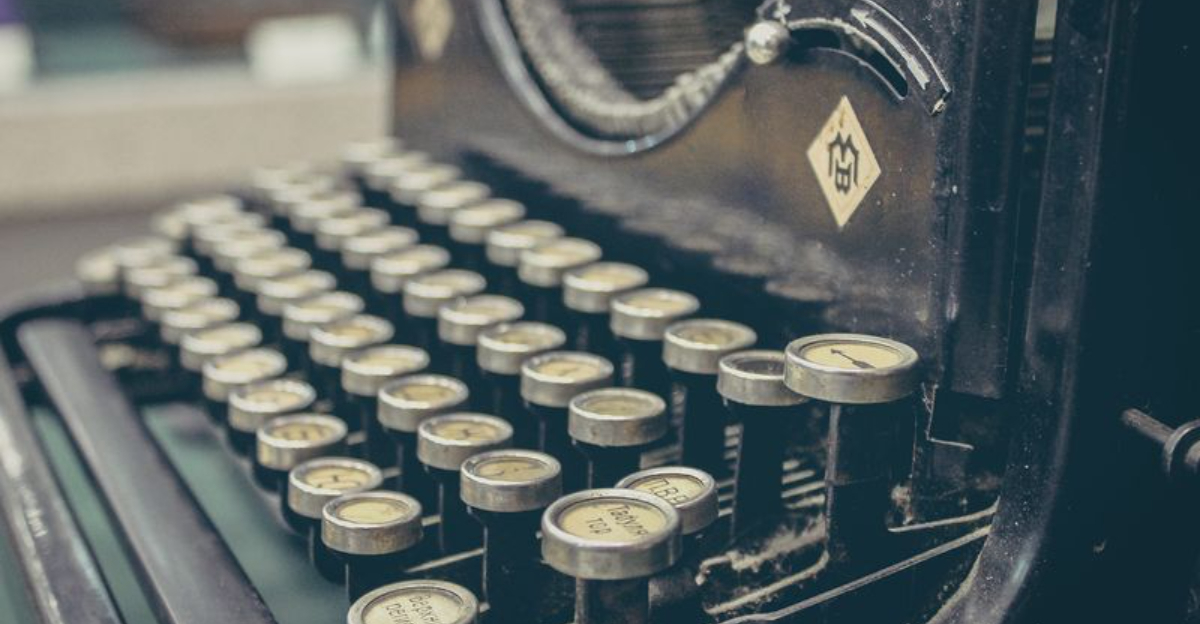
Homes have come a long way over the years, and so have the appliances inside them. What was once considered essential is now either obsolete, replaced by smarter technology, or simply no longer needed. In this list, we’re taking a nostalgic look at 12 once-standard appliances that have practically vanished from modern homes.
From relics of the past to quirky contraptions that younger generations wouldn’t even recognize, these household staples tell the story of how life and technology have evolved.
1. Rotary Telephone
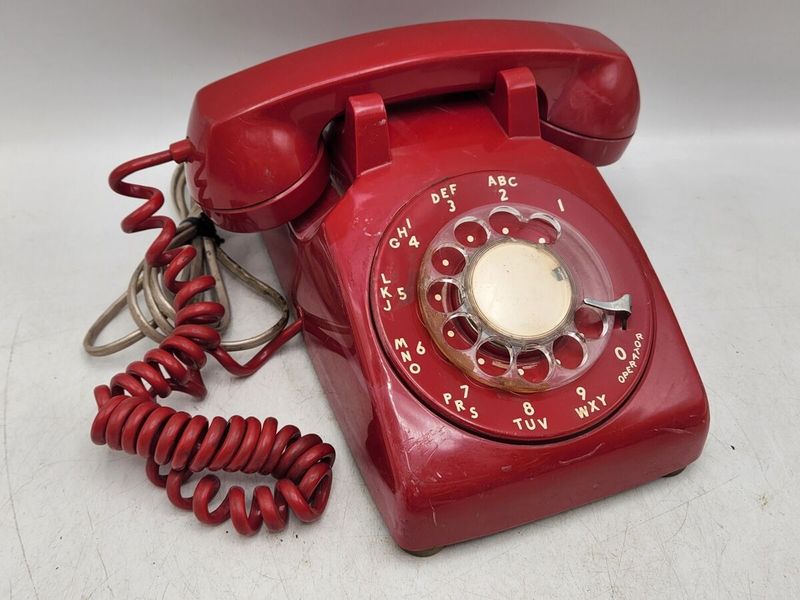
Remember the satisfying click and whirr of dialing on a rotary telephone? This classic device was a staple in homes for decades. Its tactile dialing mechanism provided a satisfying interaction, albeit slowly. As touch-tone phones emerged, the rotary’s charm faded.
Now replaced by smartphones, these phones have become vintage collectibles. Their nostalgic value remains strong, but their practicality has waned. The transition to digital made communication faster yet less personal.
For those who grew up with a rotary phone, it represents a time when patience was part of staying connected.
2. Manual Typewriter

Manual typewriters once turned thoughts into tangible words with a satisfying click-clack. Writers and journalists relied on them for creating manuscripts. The tactile feedback and the ding of reaching the end of a line were music to many ears.
However, with the advent of computers and word processors, these machines have largely disappeared. Though some enthusiasts still cherish them for their nostalgic charm, the efficiency of digital text editing has overshadowed them.
Today, they stand as symbols of a more deliberate writing process, reminding us of the craft behind each keystroke.
3. Icebox

Before refrigerators, iceboxes preserved perishables using blocks of ice. These wooden cabinets with metal lining kept food cool but required regular ice deliveries.
As electric refrigerators became common, iceboxes gradually vanished. The convenience and efficiency of refrigeration technology overshadowed the labor-intensive process of managing iceboxes.
Now, iceboxes are charming relics often seen in museums or as vintage decor, reminding us of an era when keeping food fresh was a weekly chore.
4. Mangle Wringer
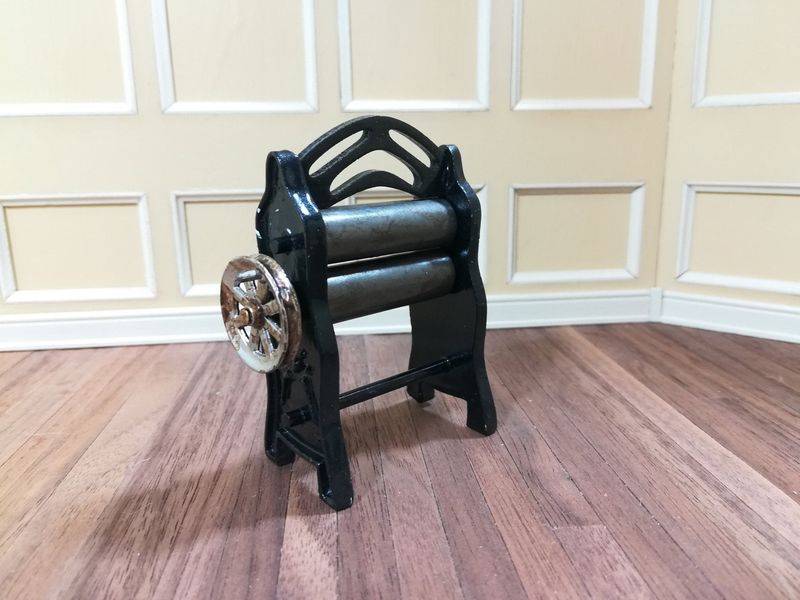
The mangle wringer, a laundry room staple, squeezed water from clothes using two rollers. This contraption saved time but required muscle power to operate.
With the invention of automatic washing machines, the manual effort of wringers became unnecessary. These devices quickly became relics of the past. Nowadays, they serve as charming antiques or quirky decor.
The mangle wringer reminds us of the evolution of laundry technology and the hard work once involved in keeping clothes clean, a task now taken for granted in modern homes.
5. Butter Churn
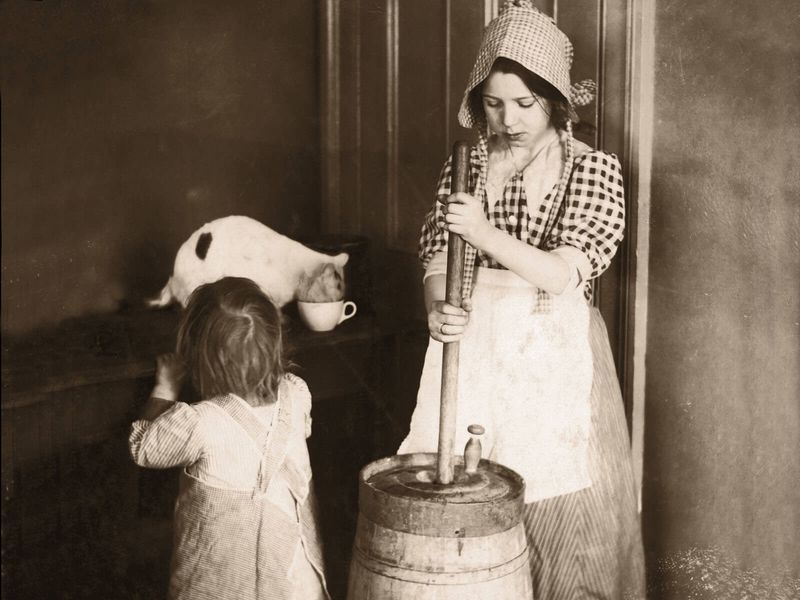
Butter churns turned cream into butter with rhythmic hand-churning. Farmers and homemakers found them indispensable in daily life.
The gradual shift to mass-produced butter led these churns to fade into obscurity. Supermarkets now sell butter in convenient packaging, rendering home churning a rarity. While some artisanal producers still use churns, most are decorative pieces.
The butter churn symbolizes a time when food production was a hands-on endeavor. Its presence in homes now serves as a nostalgic reminder of self-sufficiency and the joy of homemade delights.
6. Ringer Washing Machine
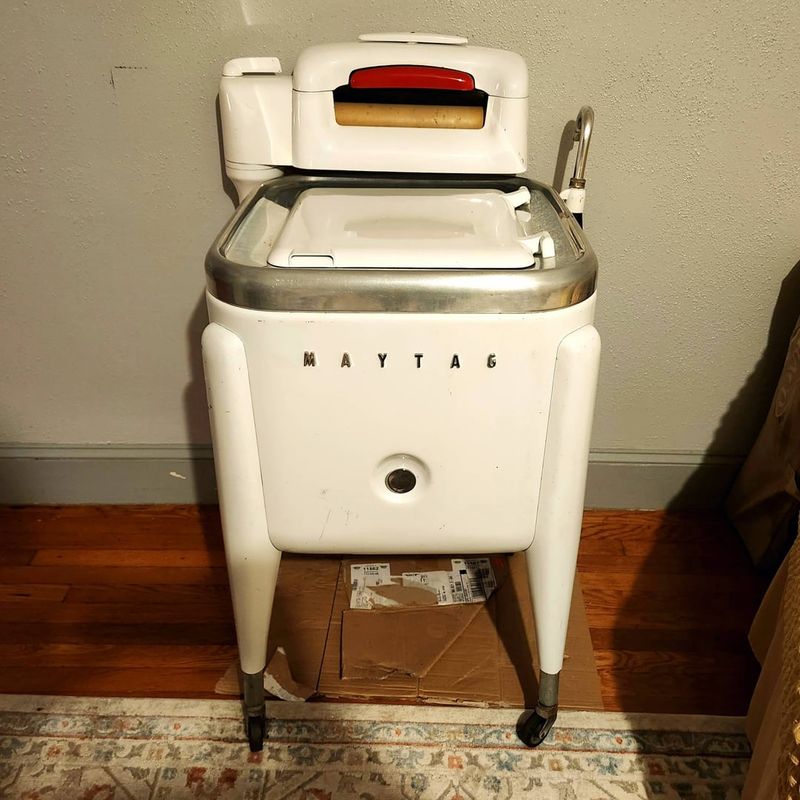
With its hand-cranked rollers, the ringer washing machine once modernized laundry day. It washed clothes and squeezed out excess water, making chores less taxing.
However, electric washing machines with automatic spin cycles soon took over, rendering ringers obsolete. While some still exist in rural areas, most are relics of the past, garnering interest from collectors.
The ringer washing machine represents a major step forward in domestic technology, reminding us of a time when innovation in household appliances began transforming daily life, easing the burden of home chores.
7. Television Antenna
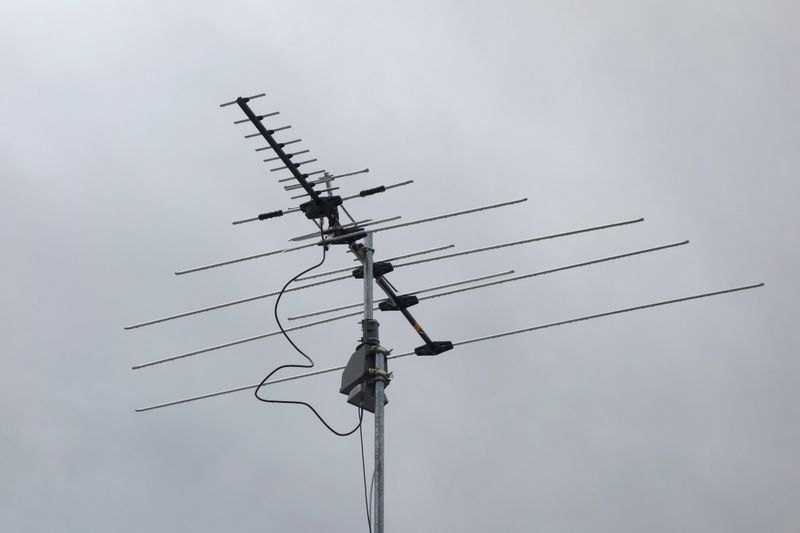
Television antennas were once essential for receiving broadcast signals. Homes had them perched on rooftops, a sight now replaced by satellite dishes and cable lines.
The antennas provided a gateway to entertainment, albeit with occasional adjustments for clear reception. As technology evolved, the bulky structures became eyesores. Digital TV and internet streaming have made antennas largely redundant.
However, these metal relics symbolize the golden age of television, when families gathered around the screen for shared experiences, a tradition that continues in different forms today.
8. Coal Iron

Coal irons, heated by hot coals, pressed clothes long before electric irons emerged. These heavy devices required skill to maintain a consistent temperature without scorching garments.
Electric irons rendered them obsolete, offering consistent heat and easier handling. While coal irons now serve as nostalgic decor, they remind us of a time when household chores demanded more effort and attention.
Collectors often admire their sturdy design and historical value, evoking memories of a bygone era where ironing was an art form, not just a task.
9. Record Player
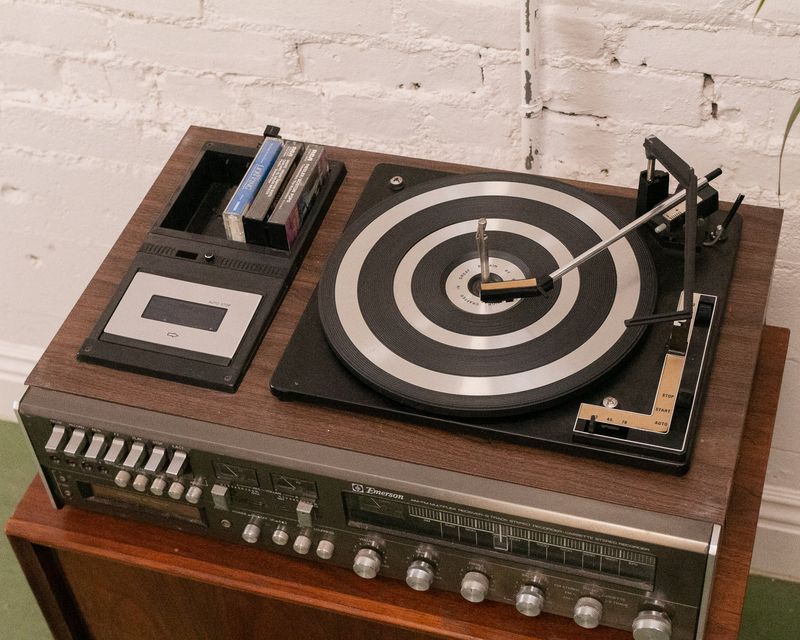
The record player spun vinyl records, filling homes with music long before digital players appeared. Its warm, authentic sound created memorable listening experiences.
The rise of CDs and digital music pushed record players into the background, though they’ve seen a resurgence among audiophiles. For many, they represent a tactile and auditory connection to music’s golden age.
The record player’s charm lies in its ability to transform music listening into an event, bringing back the tactile joy of flipping records and the inevitable hiss and pop that add to its nostalgic allure.
10. Foot-Pedal Sewing Machine
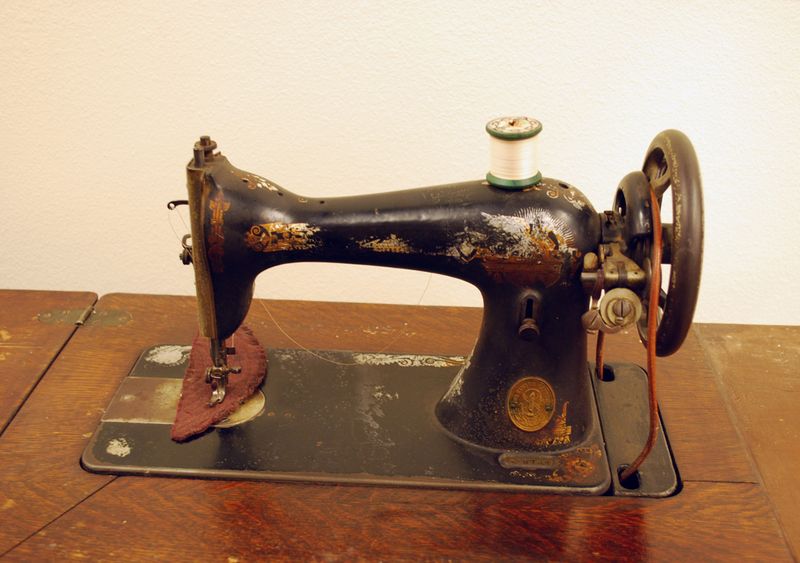
Foot-pedal sewing machines powered sewing through manual effort, predating electric versions. They were indispensable for homemakers crafting clothing and linens.
With the advent of electric machines, these foot-powered models became quaint relics. Some still cherish them for their durability and craftsmanship. They symbolize an era when sewing was both a necessity and a skill passed down through generations.
Foot-pedal machines remind us of a time when fashioning garments required patience and dedication, attributes mirrored in the rhythmic motion of the pedal and the whir of the needle.
11. Milk Separator
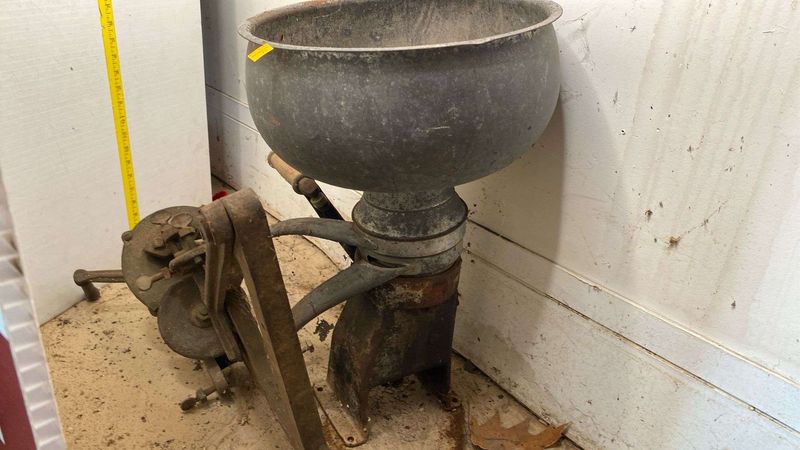
The milk separator separated cream from milk, a vital tool in dairies and farms. Its centrifugal force made butter and cream production efficient.
As large-scale dairy operations grew, these separators became less common in homes. Industrial processes now dominate, making home separation rare. Today, they serve as vintage reminders of a time when families managed milk production themselves.
The milk separator speaks to a self-reliant past, where understanding the process from cow to table was part of daily life. Its presence evokes the rustic simplicity of farm living.
12. Meat Grinder
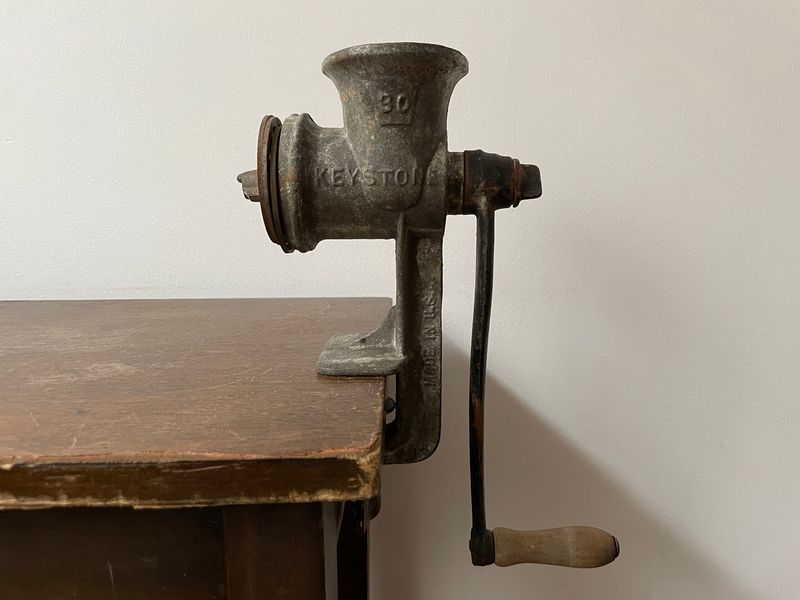
Finally, manual meat grinders once turned cuts of meat into homemade sausages and patties. Every hand-crank brought fresh, customized flavors to the table.
Electric grinders and supermarket conveniences have largely replaced them, though some cooks still prefer the control manual grinders offer. These devices represent a time when preparing meals involved more hands-on effort and creativity.
The meat grinder stands as a testament to culinary craftsmanship, reminding us of kitchen traditions where every dish was a labor of love, crafted with personal touches and family recipes.
